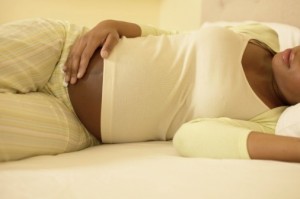The Unhappy Shotgun Marriage of Abortion and Maternal Health Advocates
 Global health advocates agree the rate of women dying in childbirth worldwide is unacceptably high. Usually, getting help from experienced advocates with political clout would be a boon to any campaign. But a new study finds family planning and abortion advocates have diverted resources and hindered progress in helping women from dying in childbirth.
Global health advocates agree the rate of women dying in childbirth worldwide is unacceptably high. Usually, getting help from experienced advocates with political clout would be a boon to any campaign. But a new study finds family planning and abortion advocates have diverted resources and hindered progress in helping women from dying in childbirth.
A recent analysis by two Belgian researchers explains how progress on maternal health has suffered from uneasy alliances between activist groups with differing goals – one that seeks to make birth safer while others wants to ensure births do not occur at all. The researchers criticize groups focusing on controversial issues like abortion and family planning for redirecting attention and resources away from emergency obstetric care, which persistently fails “to make it onto the global political agenda.”
The authors, Rachel Hammonds and Gorik Ooms, interviewed experts on global health policy. There is “universal agreement that [emergency obstetric care] is a key pillar intervention for reducing maternal mortality and morbidity,” said one expert. But “it requires health systems interventions and not…one off magic bullet solutions.” One of the “magic bullets” mentioned was the ongoing push for wide access to the drug misoprostol by groups who want it both to treat postpartum hemorrhage and to cause abortions.
Access to emergency obstetric care was not included in the UN’s Millennium Development Goals, despite a commitment to reduce maternal mortality. Hammonds and Ooms quote a report reflecting on the goals as they approach their 2015 expiration date: “Much remains to be done in the most crucial area – childbirth.”
The Belgians’ report explains that emergency obstetric care can provide solutions to the four main causes of maternal deaths: excessive bleeding, hypertension, infection, and the consequences of botched abortions.
Nowhere in Hammonds and Ooms’ analysis do they call for broader legal access to abortion. Instead, they lament how emergency obstetric care has been largely ignored in favor of more contentious issues. “I think that a lot of people working in sexual and reproductive health think that maternal mortality should not be an issue anymore,” said one of the experts they interviewed.
As for those who insist it should be an issue, one noted, “[t]he people in maternal and child health are not human rights advocates so they do not have the tools for such advocacy.”
Hammonds and Ooms conclude that emergency obstetric care has been lost in the shuffle because those who prioritize it lack the political expertise to advance their cause. Meanwhile, the sexual and reproductive rights groups were unable to achieve success despite their advocacy skills because their demands were “arguably less attractive to those politicians and policy makers working within the current system.”
Emergency obstetric care is not completely free from abortion pressures. Marge Berer argues abortion must be offered as a component of emergency obstetric care. The editor of Reproductive Health Matters cited the tragic case of Savita Halappanavar, who died from an infection while miscarrying in Ireland, a country with a better record on maternal health than nations that allow abortion.
“Any Catholic health professionals and/or hospitals refusing to terminate a pregnancy as emergency obstetric care should be stripped of their right to provide maternity services,” Berer writes. “In some countries these are the main or only existing maternity services. Even so, governments should refuse to fund these services.”

